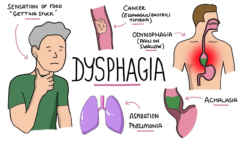Whiplash is an injury that occurs when a person’s head moves backward and suddenly forward with a massive force. It’s most common for this injury to happen after a car has been rear-ended. There have also been cases in which whiplash occurs due to the force on an amusement park ride, a sports injury, or physical abuse.
Most cases of whiplash heal with time. They don’t tend to be considered a big deal. However, certain complications from whiplash can make you unable to work. These are some scenarios in which whiplash might cause disability.
1. Chronic pain occurs
There have been cases in which a whiplash injury causes a person to experience chronic pain even after the initial injury heals. They may have neck pain, shoulder pain, or frequent headaches.
A doctor will need to diagnose the cause of the pain. In whiplash cases, the problem is often caused by damage to the ligaments, disks, and joints in the neck. There may also be widespread pain and inflammation with no cause detected on imaging scans.
It’s important to see a doctor if you’re experiencing chronic pain so you can get treatment. Also seeing a doctor right away will help your whiplash lawyer ensure you get the highest possible compensation. If you pursue legal avenues for compensation, you’ll need to prove that the whiplash injury caused your pain.
2. Your range of motion becomes limited
A limited range of motion is often accompanied by pain, but not always. Damage to the tissues in your neck might cause permanent changes. You might not be able to move your neck from side to side or to hold your head up as easily as you once could. If the limited motion range affects your posture, that could in turn lead to back pain.
You may be at a higher risk of experiencing long-term complications from whiplash if you meet any of the following criteria:
● You have previously had a whiplash injury that has since healed.
● You are an older individual, especially one with osteoarthritis.
● You already have frequent pain in your neck or low back, with or without a diagnosed cause.
● Your injury occurred at high speeds, such as when a car rear-ended you with unusual force.
A limited range of motion won’t always be disabling. It depends on how the motion is limited and how that affects your ability to function in everyday life.
3. The whiplash was misdiagnosed
It’s fairly easy to diagnose whiplash. The injury can only be caused in one specific way, so people tend to be aware if they have it. Imaging tests can confirm the seriousness of the condition.
After a neck injury, it’s vital that you get an examination and imaging tests done. Doctors will do this to rule out more serious injuries including bone fractures and nerve damage. If a doctor misses an important injury underneath the whiplash, you could have serious problems. Improper treatment of neck and spine injuries can lead to chronic pain and serious disability.
That especially goes for doctors who dismiss a patient’s pain because of their whiplash diagnosis. If you complained to your doctor of persistent pain, and they did not order any imaging tests or try to diagnose the cause, they have committed medical negligence.
Medical neglect is more common than many people think. Doctors are especially likely to dismiss pain if they believe that a patient is being dramatic or trying to get painkillers. It’s important to have all of your medical visits thoroughly documented, including both treatments and refusal to treat.






